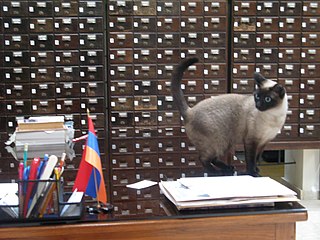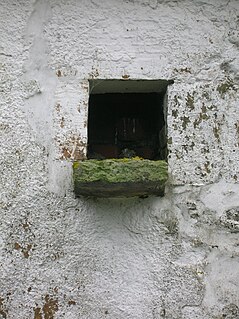 W
WThe eradication of the North American beaver in Tierra del Fuego is being attempted by the governments of Chile and Argentina in this area at the southernmost tip of South America. The non-native species was introduced in 1946 as a potential source of commercial fur trading. When the fur trade industry was unsuccessful, however, the beavers became problematic and the governments agreed to intervene. A June 2011 NPR report stated that the beavers have caused millions of dollars in damages. According to Nature, this plan is the largest eradication project ever attempted.
 W
WThe Chief Mouser to the Cabinet Office is the title of the official resident cat of the Prime Minister of the United Kingdom at 10 Downing Street. There has been a resident cat in the English government employed as a mouser and pet since the 1500s, although modern records date only to the 1920s. Though other cats have served Downing Street the first one to be given the official title of Chief Mouser by HM Government is Larry in 2011. Other cats have been given this title affectionately, usually by the British press. In 2004 a study was done showing that voters' perceptions of the Chief Mouser were not completely above partisanship.
 W
WLibrary cats are domesticated cats that live in public libraries worldwide. The association of cats with libraries continued from the Middle Ages into the nineteenth and twentieth centuries, and up to the present day.
 W
WA molecatcher is a person who traps or kills moles in places where they are considered a threat to crops, lawns, or gardens.
 W
WA mousetrap is a specialized type of animal trap designed primarily to catch and, usually, kill mice. Mousetraps are usually set in an indoor location where there is a suspected infestation of rodents. Larger traps are designed to catch other species of animals, such as rats, squirrels, other small rodents, or other animals.
 W
WAn owl hole is a structural entrance built into buildings to allow predatory birds, typically Barn Owls, to enter. The birds prey on farm vermin, and therefore benefit the human owner of the structure in a symbiotic relationship.
 W
WRats in New York City are widespread, as they are in many densely populated areas. For a long time, the number of rats in New York City was unknown, and a common urban legend declared there were up to five times as many rats as people. In 2014, however, scientists more accurately measured the entire city's rat population to be approximately only 24% of the number of humans. That would equate to approximately 2 million rats to New York's 8.4 million people at the time of the study.
 W
WThe ship's cat has been a common feature on many trading, exploration, and naval ships dating to ancient times. Cats have been carried on ships for many reasons, most importantly to control rodents. Vermin aboard a ship can cause damage to ropes, woodwork, and more recently, electrical wiring. Also, rodents threaten ships' stores, devour crews' foodstuff, and can cause economic damage to ships' cargo such as grain. They are also a source of disease, which is dangerous for ships that are at sea for long periods of time. Rat fleas are carriers of plague, and rats on ships were believed to be a primary vector of the Black Death.
 W
WTibs the Great was the British Post Office's "number one cat" and kept the post office headquarters in London completely mouse-free during his 14 years of service. He was the son of Minnie, and on his death, several newspapers ran an obituary.
 W
WA Timms trap is a device used to capture and kill common brushtail possums. Their use is commonplace in New Zealand, where the possum is an introduced pest. In Australia, where the possum is a protected native species,. The trap uses a spring-loaded metal mouth to break the neck of the animal, resulting in a rapid and humane death. It requires baiting with fresh fruit in order to attract a pest, which inserts its head through the hole at the front, springing the trap.